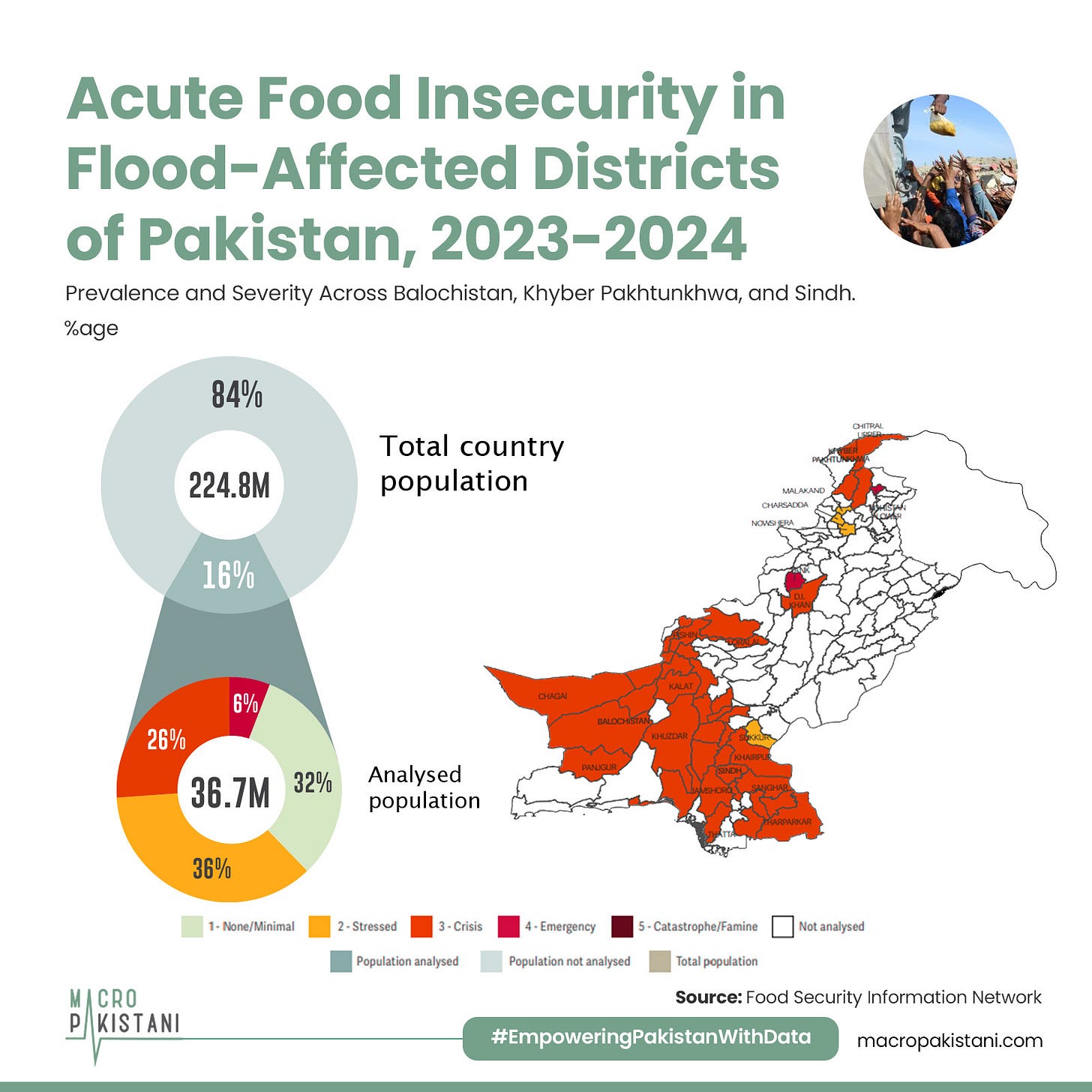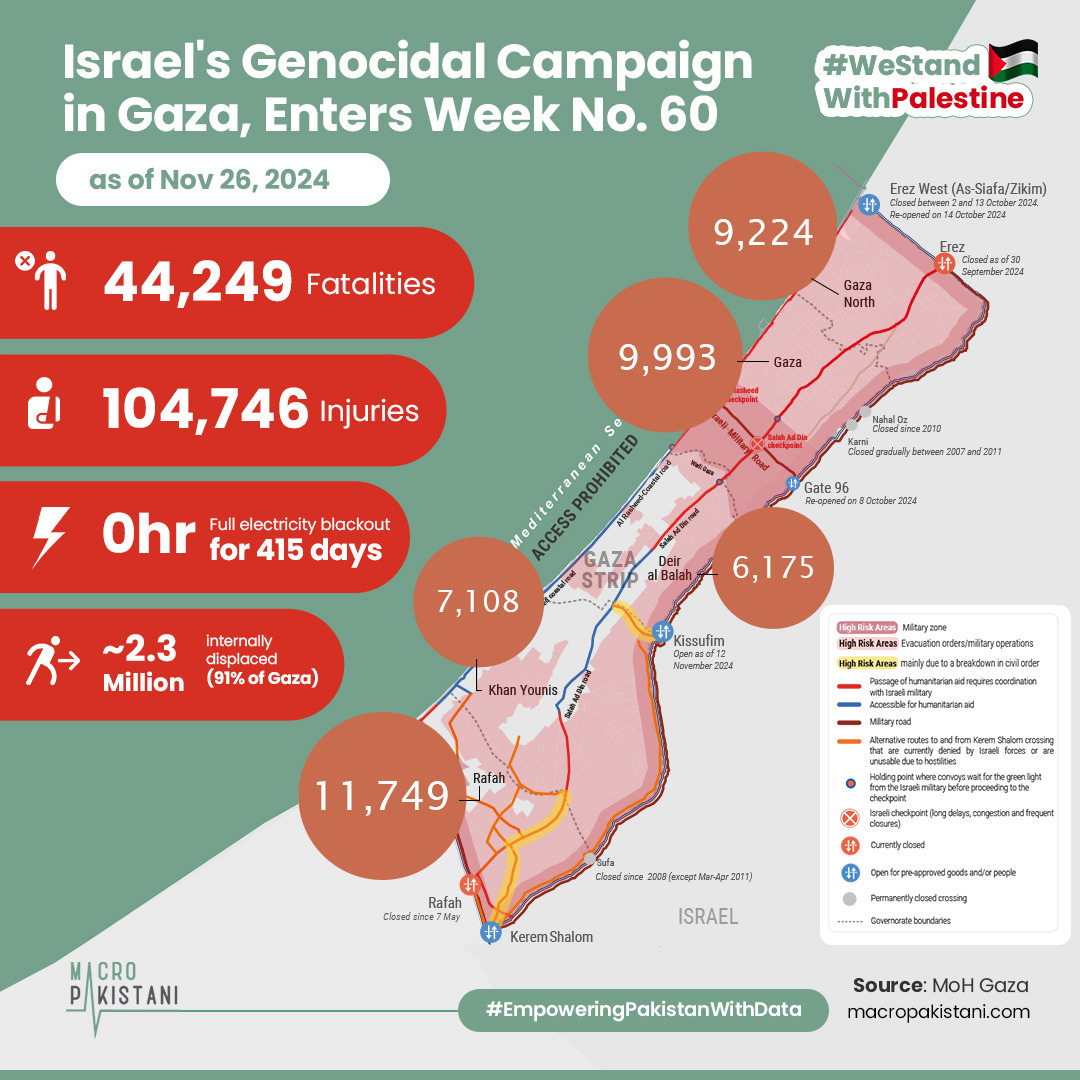Pakistan Faces Food Insecurity and Acute Malnutrition Crisis
In 2023, 11.8 million Pakistanis faced acute food insecurity due to economic shocks, inflation, and extreme weather.

Over 11.8 million people 32% of the analyzed population were projected to experience high levels of acute food insecurity in 43 flood-affected districts of Pakistan during the winter lean period. This crisis, affecting rural areas of Balochistan, Khyber Pakhtunkhwa, and Sindh provinces, has placed 2.2 million individuals in Emergency (IPC Phase 4). These alarming numbers highlight the vulnerability of communities already burdened by recurring natural disasters and economic challenges.
What measures can be implemented to build resilience and reduce food insecurity in these regions?
The drivers of this crisis are deeply rooted in a combination of climatic and economic shocks. Despite a national forecast of above-average cereal production in 2023, flood-affected districts continued to grapple with reduced crop and livestock production. Heavy monsoon rains submerged farmland, causing localized crop losses. Livestock, a critical source of income and sustenance, suffered from disease outbreaks and fodder shortages post-floods. Meanwhile, food price inflation, which peaked at 49% in May 2023, severely limited purchasing power. Contributing factors such as currency depreciation, high production costs, and fuel price surges further strained household budgets. Additionally, the poverty rate rose to 39%, pushing an estimated 12.5 million more people below the poverty line. These cascading effects illustrate how vulnerable households face compounding challenges that limit access to essential resources.
Acute malnutrition remains an equally pressing concern, particularly for children aged 6–23 months.In 2023, Afghanistan and Pakistan faced a critical malnutrition crisis, with 5.4 million children under the age of five suffering from acute malnutrition. Among these, 3.9 million were moderately acutely malnourished, while 1.5 million endured severe acute malnutrition.Poor dietary practices and inadequate access to health services have heightened risks of malnutrition in 21 of the 32 analyzed districts. 2.1 million children under 5 years old with acute malnutrition in March 2023– January 2024. Health and nutrition services disrupted by the 2022 floods left families without safe water and sanitation, creating conditions for disease outbreaks such as diarrhea and respiratory infections. High food prices have further constrained the ability of households to secure nutritious meals, leading to worsening health outcomes. Importantly, the acute malnutrition situation in most districts has surpassed acute food insecurity levels, emphasizing the significance of factors beyond food availability, such as sanitation and healthcare access. This underscores the urgent need for holistic interventions targeting health, sanitation, and nutrition alongside food security initiatives.
GRAPHICS
The rainy period in Gaza lasts between late October and April, with January being the wettest month, averaging 30 to 40 millimetres of rain.
Winter temperatures can drop as low as six degrees Celsius (42 Fahrenheit).
Recent rain has flooded hundreds of tents near the coast in Deir el-Balah, in central Gaza, as well as in Khan Yunis and Rafah in the south, according to Gaza's civil defence.
- 'Nothing left' -
On the other hand, apart from intensifying the deadly genocide, Israel has also been preventing the entry of blankets, clothing and shoes into the Gaza Strip for over a year, Euro-Mediterranean Human Rights Monitor has reported. This includes essential supplies for children, as the region faces harsh winter conditions and a catastrophic humanitarian situation.
While renewable energy currently accounts for 30% of the energy mix, primarily due to outdated hydropower projects, its share has been declining in recent years due to a growing emphasis on non-renewable sources. This shift is troubling, especially as Pakistan’s Environmental Performance Index has significantly regressed, ranking second to last globally in 2024.
The China-Pakistan Economic Corridor (CPEC) presents significant opportunities for sustainable industrial and economic growth. With a focus on clean energy and eco-friendly development, Chinese investments accounted for 87% of Pakistan’s total foreign direct investment in solar PV in 2022, highlighting the potential for transformative change.
Macro Pakistanis who read this newsletter can directly give us feedback via Substack chat:
Data Visualization & Marketing Partner: Brand Nib
Visit: https://macropakistani.com/advertise/
Grateful for the ever-growing list of collaborators!
About Us: Macro Pakistani is a data-driven research platform that aims to provide a basic understanding of Pakistan’s economy. If you have an interest in contemporary news but are currently overburdened with sensationalism and specialized vocabulary, we are the platform for you.
How are we doing? Please send us any questions, comments or suggestions by replying to this email.







